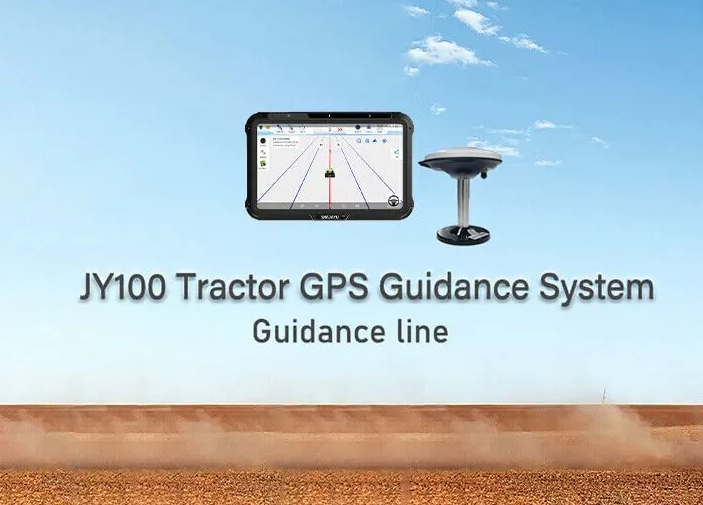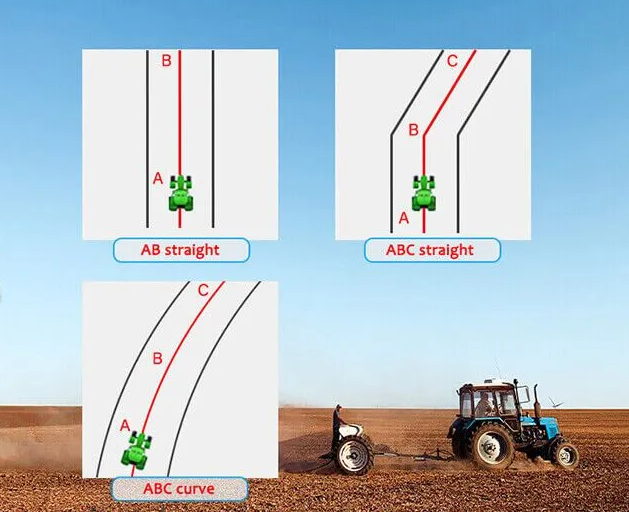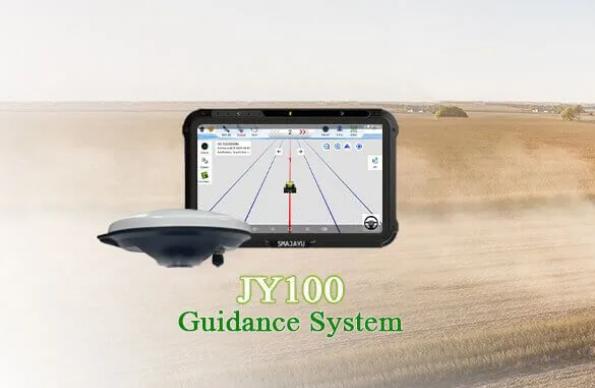In today's dynamic agricultural landscape, farmers face a myriad of challenges ranging from climate change impacts to evolving consumer demands. As the global population continues to grow, the pressure on the agricultural sector to increase productivity while minimizing environmental impact is greater than ever before. To meet these demands, farmers are increasingly turning to technology for solutions. One such technology that has revolutionized modern agriculture is GPS (Global Positioning System).

The Role of Technology in Sustainable Agriculture
1.1 Sustainable Farming Practices
Sustainability has become a central focus in modern agriculture. Farmers are striving to adopt practices that promote environmental stewardship while ensuring economic viability. From reducing chemical inputs to implementing precision farming techniques, there is a growing emphasis on sustainable farming practices.
1.2 GPS Technology for Precision Agriculture
Precision agriculture, enabled by GPS technology, has emerged as a game-changer in sustainable farming. By precisely mapping fields and monitoring crop health in real-time, farmers can optimize resource use, minimize waste, and maximize yields. GPS-guided equipment allows for precise planting, application of fertilizers and pesticides, and efficient irrigation, leading to significant cost savings and environmental benefits.
Enhancing Crop Management with Agriculture GPS
2.1 Precision Field Mapping
One of the key applications of agriculture GPS is precision field mapping. By accurately mapping fields, farmers can better understand soil variability and tailor their management practices accordingly. This allows for targeted applications of inputs, reducing waste and environmental impact.
2.2 Real-Time Monitoring
With GPS technology, farmers can monitor crop health and environmental conditions in real-time. Remote sensors and drones equipped with GPS enable farmers to detect early signs of stress, disease, or pest infestation, allowing for timely intervention and minimizing yield losses.
2.3 Yield Monitoring and Management
GPS-enabled yield monitoring systems provide farmers with valuable insights into crop performance across their fields. By analyzing yield data, farmers can identify areas of underperformance and implement corrective measures, such as adjusting planting density or soil amendments, to optimize yields and profitability.
Meeting Market Demands with Agriculture GPS
3.1 Consumer Preferences and Market Trends
Consumer preferences are driving significant changes in the agricultural market. There is a growing demand for sustainably produced, traceable, and high-quality agricultural products. Farmers who can meet these demands stand to benefit from premium prices and increased market share.

3.2 Traceability and Quality Assurance
Agriculture GPS plays a crucial role in traceability and quality assurance. By accurately tracking the movement of crops from farm to fork, farmers can provide consumers with assurance regarding the origin, production practices, and quality of their products. This transparency not only builds consumer trust but also opens up opportunities for premium market segments.
3.3 Supply Chain Optimization
Efficient supply chain management is essential for meeting market demands and maximizing profitability. Agriculture GPS can help farmers optimize their supply chains by providing real-time visibility into inventory levels, transportation routes, and delivery schedules. This enables farmers to streamline operations, reduce costs, and ensure timely delivery of products to market.
Benefits of Partnering with SMAJAYU
4.1 Cutting-Edge Technology
SMAJAYU's agriculture GPS solutions are at the forefront of innovation, incorporating the latest advancements in GPS technology, remote sensing, and data analytics. By partnering with SMAJAYU, farmers gain access to state-of-the-art tools and expertise to optimize their farming practices.
4.2 Customized Solutions
SMAJAYU understands that every farm is unique, with its own set of challenges and opportunities. That's why they offer customized solutions tailored to meet the specific needs of each farmer. Whether it's precision field mapping, real-time monitoring, or supply chain optimization, SMAJAYU works closely with farmers to develop personalized strategies for success.
4.3 Comprehensive Support
In addition to cutting-edge technology and customized solutions, SMAJAYU provides comprehensive support to its partners. From installation and training to ongoing maintenance and troubleshooting, SMAJAYU is committed to ensuring that farmers get the most out of their investment in agriculture GPS technology.
Understanding Tractor Guidance Systems
5.1 What is a Tractor Guidance System?
A tractor guidance system, such as the JY100 GNSS Guidance System, is a technology designed to enhance the precision and efficiency of farming operations. By utilizing satellite navigation technology, these systems provide farmers with accurate operation line spacing and direction, reducing the need for manual intervention and improving overall work efficiency.
5.2 The Components of the JY100 Guidance System
The JY100 guidance system comprises a professional GNSS smart antenna, a large waterproof tablet, and intuitive guidance software. This comprehensive setup offers farmers a user-friendly interface with large, iconic buttons for easy navigation and operation. With minimal training required, farmers can quickly access essential functions and optimize their farming tasks.
Advantages of the JY100 Guidance System
6.1 Precision and Accuracy
One of the key advantages of the JY100 system is its high precision positioning board, which eliminates the need for a base station connection and enables centimeter-level positioning accuracy. With a 2.5cm precision RTK guidance system, farmers can confidently navigate their fields with unparalleled accuracy, ensuring optimal crop placement and management.
6.2 Remote Management and Monitoring
The JY100 system features cloud storage capabilities, allowing farmers to access job information in real-time and monitor job status remotely. This enables seamless remote management, providing farmers with greater flexibility and control over their farming operations. Additionally, the system's 24-hour continuous operation ensures reliability and performance, even during nighttime operations.
6.3 Versatility and Adaptability
With support for GNSS four-system full-band signals and strong anti-interference capabilities, the JY100 system can withstand the harshest operating environments. Whether navigating through dense foliage or challenging terrain, farmers can rely on the system's robust performance to deliver consistent results. Furthermore, the system offers a range of guidance line options, including AB straight, ABC straight, and ABC curve, to accommodate various farming tasks and preferences.

Main Accessories and Features
7.1 Guidance Line Options
The JY100 system offers multiple guidance line options, including AB straight, ABC straight, and ABC curve, allowing farmers to customize their operations according to specific field requirements. Whether following straight lines or navigating complex curves, farmers can select the most suitable guidance line option for optimal performance.
7.2 Correction Type Support
The system supports CORS correction, enabling centimeter-level positioning accuracy without the need for additional correction equipment. With CORS correction, farmers can achieve precise navigation and placement, maximizing the efficiency and effectiveness of their farming operations. Additionally, the system offers both 2.5cm accuracy with CORS correction and 20-30cm accuracy without correction, providing flexibility to meet diverse operational needs.
7.3 Portable and Easy Installation
Despite its advanced capabilities, the JY100 system is portable and easy to install, allowing farmers to quickly set up and deploy the system in the field. With its user-friendly interface and intuitive operation, farmers can seamlessly integrate the system into their existing workflows without significant downtime or disruption.
As agriculture continues to evolve in response to changing market dynamics and environmental pressures, technology will play an increasingly important role in shaping the future of farming. Agriculture GPS, with its ability to enhance precision, efficiency, and sustainability, is poised to drive significant advancements in agricultural productivity and profitability. By partnering with innovative companies like SMAJAYU, farmers can harness the power of GPS technology to navigate the challenges and opportunities of modern agriculture, ensuring a prosperous and sustainable future for generations to come.


